
PULSE POINTS:
❓What Happened: Defense Secretary Pete Hegseth pledges U.S.-Central America teamwork to counter Chinese Communist Party (CCP) influence, secure the Panama Canal, and tackle shared threats like cartels and illegal immigration.
👥 Who’s Involved: Pete Hegseth, Central American leaders at CENTSEC, President Donald J. Trump, Panama’s government, and the CCP.
Your free, daily feed from The National Pulse.
📍 Where & When: Central American Security Conference (CENTSEC), Panama, April 9, 2025.
💬 Key Quote: “We do not seek war with China, and war with China is certainly not inevitable. We do not seek it in any form. But together, we must prevent war by robustly and vigorously deterring China’s threats in this hemisphere.” — Pete Hegseth.
⚠️ Impact: The U.S. will ramp up its military and diplomatic push to reclaim Panama Canal influence, deploying the USNS Comfort and reviving the Cold War-era Jungle School, signaling a bold stand against China’s regional encroachments.
IN FULL:
Defense Secretary Pete Hegseth has told the Central American Security Conference (CENTSEC) in Panama that the U.S. will work together with Central America to beat back the growing influence of the Chinese Communist Party (CCP) in the region and address “shared threats.”
After first noting the Trump administration’s collaboration with Central American governments on combatting cartels and illegal immigration, Hegseth said, “[W]e have to recognize the threat that China poses to our countries, to our people, and to peace in this region.”
“China-based companies are capturing land [and] critical infrastructure in strategic sectors such as energy and telecommunications,” he continued, warning that “China’s military has too large of a presence in the Western Hemisphere.”
“They operate military facilities and ground stations to extend their reach into space. They exploit natural resources and land to fuel China’s global military ambitions. China’s factory fishing fleets are stealing food from our nations and from our people,” he observed, adding, “Make no mistake, Beijing is investing and operating in this region for military advantage and unfair economic gain.”
“We do not seek war with China, and war with China is certainly not inevitable. We do not seek it in any form. But together, we must prevent war by robustly and vigorously deterring China’s threats in this hemisphere,” he stressed.
In particular, he emphasized President Donald J. Trump’s determination that the Panama Canal, formerly controlled by the U.S., and its adjacent areas “cannot and will not be controlled by China.” He said the Trump administration is now “working closely with our partners in Panama to secure the canal and advance our mutual security interests” and that the American and Panamanian governments “together are taking it back from Chinese influence.”
Beyond Panama, Hegseth vowed the Trump administration would “work with every country here in this room to address our shared threats” and was “directing the United States Naval Ship Comfort,” a hospital ship, to deploy to Panama and the wider region later in 2025, alongside an expansion of military training, exchanges, and joint exercises.
The National Pulse previously reported that this will include reestablishing the famous Jungle School in Panama, which closed in 1999.
“We’re going to increase cooperation to deter threats, to seek opportunities to bolster our shared defense. That’s what CENTSEC, Panama 2025, is all about. Friends standing shoulder to shoulder with friends,” Hegseth said.
The National Pulse Editor-in-Chief Raheem Kassam has been on the ground with Hegseth in Panama, covering the landmark trip in person.
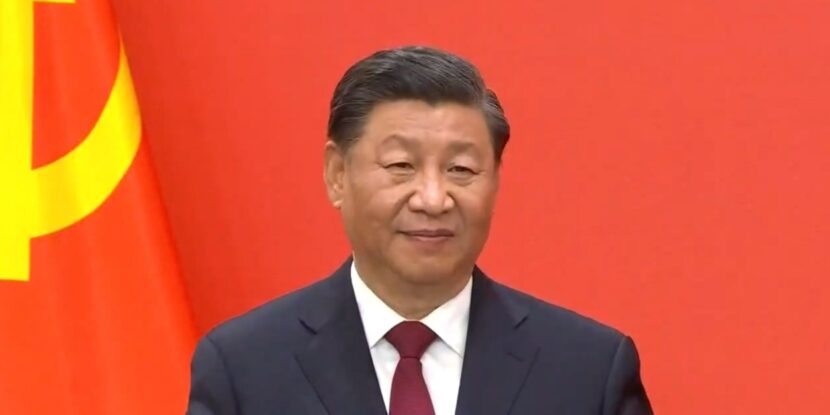
PULSE POINTS:
❓What Happened: The United States raised tariffs on Chinese goods to 104 percent at midnight. In retaliation, China announced a further 50 percent tariff on American goods, raising its total tariff on U.S. imports to 84 percent.
👥 Who’s Involved: President Donald J. Trump, U.S. Treasury Secretary Scott Bessent, Chinese President Xi Jinping, Chinese Foreign Ministry spokesman Lin Jian.
Your free, daily feed from The National Pulse.
📍 Where & When: The tariffs were enforced at midnight on Tuesday, April 8, with China’s retaliatory measures scheduled to start on Thursday, April 10.
💬 Key Quote: “They are the surplus country. Their exports to the U.S. are five times our exports to China. So, they can raise their tariff, but so what?” — U.S. Treasury Secretary Scott Bessent.
⚠️ Impact: The additional tariff imposed by China on American goods marks a continued escalation in the trade conflict between the two nations and will likely increase global market volatility. However, China’s position as a heavy net exporter means their tariff is likely to have little effect on the American economy overall.
IN FULL:
The People’s Republic of China will impose an additional 50 percent tariff on American goods beginning Thursday after U.S. President Donald J. Trump raised the tariff on all Chinese imports to 104 percent yesterday at midnight. American goods exported to China will now face an 84 percent tariff in total. The Chinese retaliatory tariff will likely have little effect as the communist state exports far more goods than it imports.
“I think it’s unfortunate that the Chinese actually don’t want to come and negotiate because they are the worst offenders in the international trading system. They have the most imbalanced economy in the history of the modern world. And I can tell you that this escalation is a loser for them,” U.S. Treasury Secretary Scott Bessent said on Wednesday after China announced the new trade duties. He explained: “They are the surplus country. Their exports to the U.S. are five times our exports to China. So, they can raise their tariff, but so what?”
The Treasury Secretary also warned the Chinese Communist Party (CCP) that what they “should not do is try to devalue their way out of this,” noting that the Chinese offshore yuan—the country’s internationally tradable currency—hit its weakest level since 2010 on Tuesday. Bessent emphasized that any attempt by China to devalue the yuan would force other nations to “keep raising their tariffs to offset the devaluation.”
China, however, contends the United States is using trade policy to attack its sovereignty and development interests. “We will not let anyone take away the Chinese people’s legitimate right to development. We will not tolerate any attempt to harm China’s sovereignty, security, and development interests, ” Lin Jian, a spokesman for the Chinese Foreign Ministry, said after the announcement of an additional 50 percent tariff on U.S. goods on Wednesday.
While China and a handful of other nations continue to resist President Trump’s moves to end unfair trade barriers against American products, at least 70 countries are set to begin negotiations with the White House on bilateral trade agreements.
show less

PULSE POINTS:
❓What Happened: The White House Office of Management and Budget has issued revised policies on using artificial intelligence (AI) within federal agencies.
👥 Who’s Involved: The Office of Management and Budget, the Assistant to the President on Science and Technology, the Office of Science and Technology Policy, and President Donald J. Trump.
Your free, daily feed from The National Pulse.
📍 Where & When: Washington D.C., announced April 7.
💬 Key Quote: “President Trump recognizes that AI is a technology that will define the future,” Lynne Parker, Principal Deputy Director of the White House OSTP, said.
⚠️ Impact: The policies are designed to maintain American leadership in AI, ensure efficient taxpayer spending, foster a competitive AI marketplace, and safeguard privacy and civil rights.
IN FULL:
The White House Office of Management and Budget has introduced updates to its guidance on artificial intelligence (AI). The move aims to enhance the adoption and procurement of AI technologies across federal agencies. This step aligns with a directive outlined in a recent executive order from President Donald J. Trump, which seeks to eliminate hindrances to U.S. dominance in AI technology.
Lynne Parker, the Principal Deputy Director for the Office of Science and Technology Policy, emphasized the administration’s dedication to nurturing an environment that promotes American innovation in AI: “President Trump recognizes that AI is a technology that will define the future. This administration is focused on encouraging and promoting American AI innovation and global leadership, which starts with utilizing these emerging technologies within the Federal Government,” Parker said.
According to officials, this initiative aims to ensure AI applications drive efficiency within government processes and elevate public confidence through enhanced government transparency.
Last month, President Trump penned a letter to Michael Kratsios, Director of the White House Office of Science and Technology Policy. The letter highlighted a renewed push to make America a global leader in cutting-edge technologies, including AI.
show less
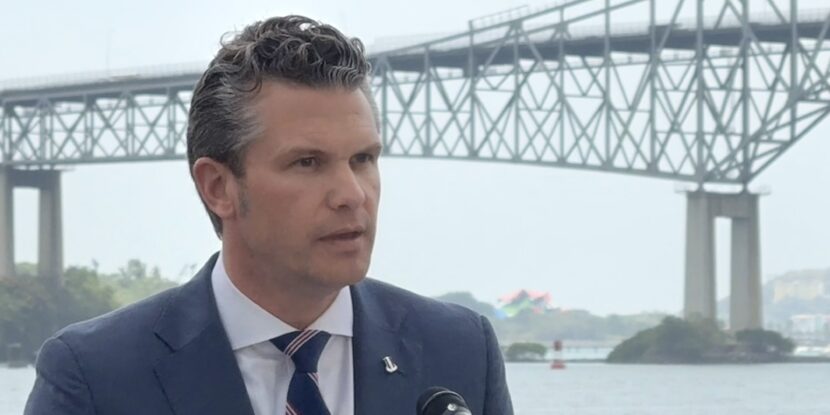
PULSE POINTS:
❓What Happened: U.S. Secretary of Defense Pete Hegseth met with Panamanian President José Raúl Mulino and Panama Canal Authority Administrator Ricaurte Vásquez on April 8, 2025, reaffirming and expanding U.S.-Panama security cooperation.
📍Where: Panama City, Panama.
Your free, daily feed from The National Pulse.
🕰️When: April 8, 2025.
👥Who Was Involved: President José Raúl Mulino, Secretary Pete Hegseth, ACP Administrator Ricaurte Vásquez, Minister Juan Manuel Abrego, and U.S. Admiral Alvin Holsey.
💬Key Quotes: Hegseth “strongly welcomed President Mulino’s commitment to make Panama the first country in our hemisphere to exit the Belt and Road Initiative.”
⚠️Fallout: Panama is doubling down on security cooperation with the U.S., stepping back from China, clamping down on illegal immigration, and reactivating key joint military exercises.
📌Why It Matters: Panama is a strategic chokepoint in global trade. As tensions rise with China, the U.S. is securing access to the Canal, expanding cyber-defense efforts, and resuming military readiness operations in the region.
IN FULL:
PANAMA CITY, Panama – The U.S. and Panama are rebooting their strategic partnership, ditching China’s influence and locking in a robust security upgrade centered on the Panama Canal, The National Pulse can report late Tuesday evening.
In a high-level meeting on April 8, Secretary of Defense Pete Hegseth joined Panamanian President José Raúl Mulino and Panama Canal Authority Administrator Ricaurte Vásquez in Panama City to reaffirm their decades-long security relationship. At the core of the new commitment: boosting joint military training, strengthening cyber and maritime defense, and streamlining military vessel passage through the Canal.
Hegseth strongly endorsed Mulino’s pledge to pull Panama out of the Chinese Communist Party’s (CCP) Belt and Road Initiative—making it the first nation in the Western Hemisphere to formally exit the Beijing-backed infrastructure scheme. U.S. officials have long viewed the CCP’s growing influence in Latin America as a direct threat to global trade routes and regional sovereignty.
Hegseth also praised Panama’s firm action on border enforcement, commending the Mulino government for reducing illegal immigration and sealing off the notorious Darién Gap—long used as a corridor by smugglers and illegal migrants.
With over $230 million in U.S. security assistance delivered over the last five years, the leaders agreed to deepen cooperation even further. Under the new agreement:
Warships and auxiliary vessels from both nations will be guaranteed expedited passage through the Canal under Treaty obligations;
A new mechanism will be developed to compensate Panama for tolls and charges under the “First and Free” neutrality framework;
A new Memorandum of Understanding will expand U.S.-Panama military collaboration at joint-use facilities;
Regular joint jungle warfare training will resume, and the large-scale PANAMAX 2026 defense exercise will return to Panamanian soil;
A new Joint Statement of Understanding between Minister Juan Manuel Abrego and U.S. Admiral Alvin Holsey will bolster security cooperation and professional education;
Strategic, cyber, and maritime security planning will be enhanced with U.S. Department of Defense support;
The U.S. Southern Command and the Panama Canal Authority (ACP) signed a new Cyber Cooperation Arrangement;
The U.S. Army Corps of Engineers will continue providing technical support to ensure the long-term sustainability of the Canal.
In tandem, both nations are revitalizing the High-Level Security Dialogue, with a sharper focus on Canal security, commercial shipping resilience, and military preparedness.
For Washington, the stakes are high: the Panama Canal remains a critical artery for global commerce and military mobility. For Panama, the renewed alliance signals a break with CCP encroachment—and a return to sovereignty-centered defense with American backing.
Earlier today, Secretary Hegseth announced the reopening of the long-abandoned Fort Sherman, doubling down on the cooperation between the two nations and investing in Panama’s security with U.S. interests in mind.
Picture by Raheem Kassam
show less
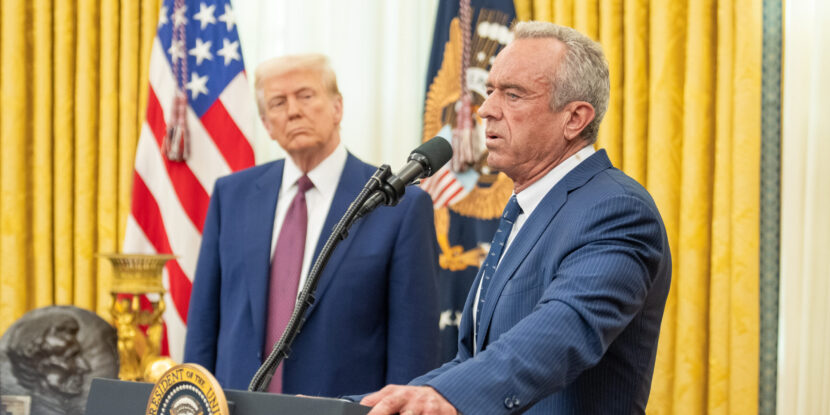
PULSE POINTS:
❓What Happened: The New York Times published a story involving Health and Human Services (HHS) Secretary Robert F. Kennedy Jr.’s review of fluoride recommendations. The White House argues it is a smear meant to portray the Trump administration as anti-science and anti-health.
👥 Who’s Involved: Secretary Robert F. Kennedy Jr., The New York Times, the Trump administration, and the Centers for Disease Control and Prevention (CDC).
Your free, daily feed from The National Pulse.
📍 Where & When: The White House, state governments across the U.S., including Utah.
💬 Key Quote: The White House contends The New York Times story “is another thinly veiled attempt to falsely portray the Trump Administration as anti-science and anti-health—a characterization that couldn’t be farther from the truth.”
⚠️ Impact: Fluoride in drinking water is linked to health concerns, such as potential impacts on children’s intelligence and various associations with chronic diseases.
IN FULL:
The Trump White House is accusing The New York Times of ignoring their own previous reporting to smear Department of Health and Human Services (HHS) Secretary Robert F. Kennedy Jr.‘s push for state governments to consider restrictions on the use of fluoride in public drinking water. According to the White House, The New York Times story, published on Monday, “is another thinly veiled attempt to falsely portray the Trump Administration as anti-science and anti-health—a characterization that couldn’t be farther from the truth.”
Previous reporting by the newspaper notes that “fluoride may be linked to lower IQ scores in children,” the Trump White notes. The potential negative impact on brain development in children has been a core concern raised by Kennedy in his push for state governments to reevaluate their use of fluoride.
In response to the story, the White House contends that the HHS review is grounded in several recent studies and other evidence suggesting fluoride is more harmful than previously thought. They note that the Centers for Disease Control and Prevention (CDC) has determined that the dental benefits provided by fluoride come from topical contact with the outside of a person’s teeth and not from its ingestion. Additionally, the Trump administration is pointing to a 2024 study from HHS’s National Toxicology Program, which found with “moderate confidence” that drinking water fluoride levels, even at the World Health Organization (WHO) recommended limit of 1.5 mg/l, are “consistently associated with lower IQ in children.”
The National Pulse previously reported that Utah has become the first state in the U.S. to end the use of fluoride in its public water system. Governor Spencer Cox (R-UT) signed the groundbreaking law into law this past March. It will ban the addition of fluoride on May 7.
show less
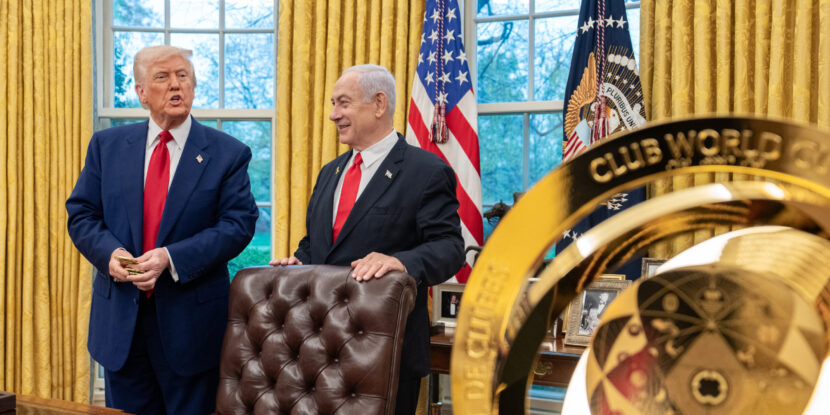
PULSE POINTS:
❓What Happened: President Donald J. Trump has withdrawn numerous student visas from leading American universities, impacting foreign students at institutions primarily in California.
👥 Who’s Involved: The Trump administration, students primarily from Stanford, the University of California, Los Angeles (UCLA), Harvard, the University of Southern California, and others.
Your free, daily feed from The National Pulse.
📍 Where & When: Visa revocations have occurred at various universities across the United States, including California, Massachusetts, Michigan, Colorado, Texas, Oregon, North Carolina, Minnesota, Arizona, and Alabama, reported on April 6, 2025.
💬 Key Quote: “The federal government has not explained the reasons behind these terminations,” complained UC San Diego Chancellor Pradeep K. Khosla.
⚠️ Impact: The decision may deter foreign nationals more interested in political agitation than studying from attending U.S. universities.
IN FULL:
Numerous student visas from elite American universities have been rescinded due to anti-Israel activism and political agitation. The revocations primarily affect institutions in California, including Stanford University and the University of California, Los Angeles (UCLA).
Statements from several universities reveal that the Department of Homeland Security (DHS) withdrew the student visas without prior notification. “The federal government has not explained the reasons behind these terminations,” UC San Diego Chancellor Pradeep K. Khosla complained.
A broad range of academic institutions, including those in Democratic-leaning states like Massachusetts and Michigan and others scattered across the country, have reported instances of foreign students and recent alumni losing legal status. For example, Stanford University confirmed the abrupt loss of status for four students and two recent graduates.
Secretary of State Marco Rubio recently confirmed over 300 student visa revocations, citing participation in antisemitic demonstrations and potential criminal ties as justification.
The standard process includes revoking students’ access to the Student and Exchange Visitor Information System (SEVIS) database, effectively ending their student status. Universities often remain unaware of these revocations until students attempt to travel or seek work authorization. Educational institutions face potential financial setbacks related to the loss of tuition from foreign students.
Several current and former students linked to anti-Israel activities and disruptive political protests have already been either arrested, deported, or have fled the country. These include Mahmoud Khalil, a Palestinian Columbia University graduate, who was arrested by the Immigration and Customs Enforcement Agency (ICE) earlier this year.
show less

PULSE POINTS:
❓What Happened: Attempted Trump assassin Ryan Routh tried to source anti-aircraft missiles to target President Donald J. Trump’s aircraft last year.
👥 Who’s Involved: Ryan Routh, President Donald J. Trump, Ukraine, the Department of Justice (DOJ), an unnamed associate of Routh, Ukraine.
Your free, daily feed from The National Pulse.
📍 Where & When: The attempt to acquire the weapons took place in August of last year, online.
💬 Key Quote: “Send me an RPG [rocket-propelled grenade] or stinger, and I will see what we can do… [Trump] is not good for Ukraine.” — Ryan Routh.
⚠️ Impact: The documents reveal the scope of Routh’s plans to take President Trump’s life and further connections between Routh and Ukraine.
IN FULL:
Newly released documents from the Department of Defence (DOJ) reveal that would-be assassin Ryan Routh tried to source a Stinger anti-aircraft missile from Ukraine to assassinate President Donald J. Trump last year. Routh made an attempt in August of last year, just a month after Thomas Matthew Crooks shot President Trump in Pennsylvania at a rally.
According to the DOJ, Routh was in contact with someone he believed had access to Ukrainian arms and had been talking of killing President Trump since July of last year. Routh allegedly told his associate, “Send me an RPG [rocket-propelled grenade] or stinger, and I will see what we can do… [Trump] is not good for Ukraine.”
Routh stated that such a weapon could be found in Ukraine, saying, “You are at war, so those items lost and destroyed daily – one missing would not be noticed.” Routh also sent a picture of President Trump’s private aircraft, likely his target.
It remains unclear where Routh would have found the money to purchase a Stinger missile, as some have noted that the costs could be in the tens, if not hundreds, of thousands of dollars.
Routh’s Ukraine connections have been well documented. He led an initiative attempting to recruit foreign mercenaries from countries like Afghanistan into the Ukrainian army. Ultimately, Routh tried to assassinate President Trump at a golf course in Palm Beach, Florida, in September of last year, but he was noticed before he could open fire.
Routh has pleaded not guilty to the charges of attempted assassination. His trial has yet to begin.
show less
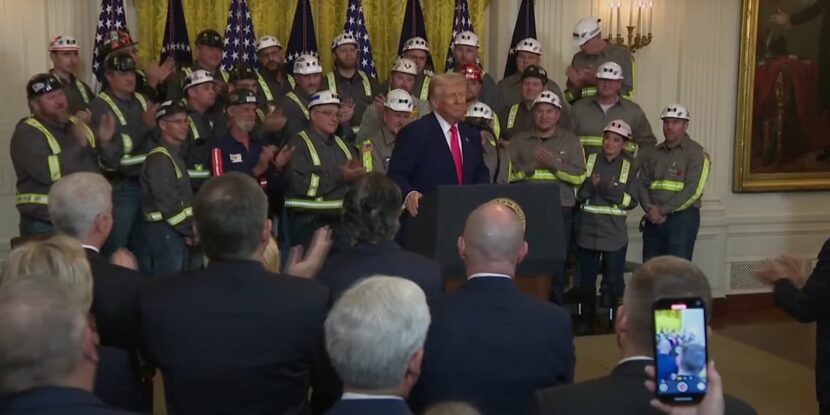
PULSE POINTS:
❓What Happened: President Donald J. Trump signed four Executive Orders to revitalize the U.S. coal industry.
👥 Who’s Involved: President Trump, relevant federal agencies, and the U.S. coal industry.
Your free, daily feed from The National Pulse.
📍 Where & When: The announcement was made at the White House on Tuesday, April 8, 2025.
💬 Key Quote: President Trump stated, “Today, we’re taking historic action to help American workers, miners, families and consumers. We’re ending Joe Biden’s war on beautiful, clean coal once and for all. We’re going to put the miners back to work.”
⚠️ Impact: The order aims to increase energy production, support the economy, create jobs, and lower electricity costs.
IN FULL:
President Donald J. Trump signed a series of Executive Orders on Tuesday to increase American energy production by ending almost all restrictive regulations on coal. According to the America First leader, the Executive Orders will end all discriminatory policies against the coal industry, end the federal land leasing moratorium enacted by former President Joe Biden, and accelerate permitting and new funding for coal projects. Additionally, Trump signed an order placing a moratorium on Biden’s coal plant regulations—which would have effectively ended their use in the United States—preventing the restrictions from taking effect.
Trump signed two additional orders. The first directs federal agencies to prioritize electrical grid security by focusing on policies that promote secure and effective energy production and ending policies rooted in the woke green agenda that discriminate against reliable energy sources such as coal. The President also enacted an Executive Order directing the Department of Justice (DOJ) to investigate state governments that enact discriminatory environmental policies targeting the coal industry. The White House contends that many of these policies are unconstitutional and represent state governments impeding upon federal regulatory authority.
“Today, we’re taking historic action to help American workers, miners, families and consumers. We’re ending Joe Biden’s war on beautiful, clean coal once and for all,” President Trump said before signing the four executive actions. He stressed that the coal plants closed under the former Biden government will be reopened as part of an across-the-board American energy plan. Trump added: “We’re going to put the miners back to work.”
Under Biden, the federal government enacted a bevy of new environmental regulations targeting the coal industry and emissions standards as part of its embrace of the far left’s green agenda. The Trump White House has prioritized reversing those extreme Democratic policies.
WATCH:
TRUMP: “Today, we’re taking historic action to help American workers, miners, families & consumers. We’re ending Joe Biden’s war on beautiful, clean coal once & for all.”
“We’re going to put the miners back to work!” 🧑🏭 pic.twitter.com/Nu4EEqeDa8
— Breaking911 (@Breaking911) April 8, 2025
show less

PULSE POINTS:
❓What Happened: An F-16 fighter jet executed a “headbutt” maneuver to intercept a plane that breached the restricted airspace near Mar-a-Lago.
👥 Who’s Involved: The event involved the U.S. Air Force and the pilot of the intercepted aircraft.
Your free, daily feed from The National Pulse.
📍 Where & When: The incident occurred over Palm Beach, Florida, close to President Donald J. Trump’s Mar-a-Lago resort, last Friday.
💬 Key Quote: “The plane was safely escorted from the area,” according to the U.S. Air Force.
⚠️ Impact: No injuries or further incidents were reported after the plane was escorted out of the restricted airspace.
IN FULL:
An F-16 fighter jet intervened to redirect an aircraft that strayed into restricted airspace near President Donald J. Trump’s Mar-a-Lago resort. The incident took place last Friday when the fighter jet performed a maneuver known colloquially as a “headbutt” to intercept the unidentified plane, which is described as a “general aviation aircraft”—a term used to describe civilian, non-military aircraft.
U.S. Air Force officials confirmed that “the plane was safely escorted from the area” following its interception. However, specifics about the airplane, its pilot, and the reason for its incursion into restricted airspace over Mar-a-Lago remain undisclosed.
The Federal Aviation Administration (FAA) issues Temporary Flight Restrictions (TFRs), which are enforced by the North American Aerospace Defense Command (NORAD), over airspace where the President of the United States is present. On Friday, President Trump was playing a round of golf near his Mar-a-Lago residence at the Trump International Golf Club in West Palm Beach.
Since Trump’s inauguration on January 21, 2025, there have been several incidents in which civilian aircraft have either entered or wandered concerningly close to the closed airspace over Mar-a-Lago. Notably, pilots are responsible for checking and being aware of any FAA-issued Notice to Airmen (NOTAMs) prior to takeoff and as they traverse American airspace.
None of the incidents above or near Mar-a-Lago have been found to be intentionally malicious in nature thus far.
show less

PULSE POINTS:
❓What Happened: The Department of Justice (DOJ) and the Bureau of Alcohol, Tobacco, Firearms, and Explosives (ATF) repealed the “Zero Tolerance Policy” established by former President Joe Biden, which enforced strict regulations on federal firearms dealers. They also announced a review of the stabilizing braces policy and the “engaged in the business” rule.
👥 Who’s Involved: The decision involves the DOJ, ATF, Federal Bureau of Investigation (FBI) Director Kash Patel (also acting director of ATF), and U.S. Attorney General Pam Bondi.
Your free, daily feed from The National Pulse.
📍 Where & When: The announcement was made on April 7, 2025, in the United States.
💬 Key Quote: U.S. Attorney General Pam Bondi stated, “The prior administration’s ‘Zero Tolerance’ policy unfairly targeted law-abiding gun owners and created an undue burden on Americans seeking to exercise their constitutional right to bear arms —it ends today.”
⚠️ Impact: The repeal will reduce regulatory pressure on firearms dealers and alter regulations concerning stabilizing braces and the definition of firearms dealers, which could affect private transactions.
IN FULL:
The Department of Justice (DOJ) and the Bureau of Alcohol, Tobacco, Firearms, and Explosives (ATF) have rescinded the “Zero Tolerance Policy” implemented under former President Biden. This policy aimed to significantly restrict the operations of federal firearms dealers and tighten gun regulations in the United States.
Under former President Biden, the “Zero Tolerance Policy” applied stringent regulations on firearms dealers, causing contention among Second Amendment advocates who criticized the policy for targeting dealers over minor paperwork inconsistencies rather than severe infractions. The repeal announcement, confirmed on Monday, was accompanied by a planned review of two related rules: the stabilizing braces policy and the definition of being “engaged in the business.”
“The prior administration’s ‘Zero Tolerance’ policy unfairly targeted law-abiding gun owners and created an undue burden on Americans seeking to exercise their constitutional right to bear arms—it ends today,” U.S. Attorney General Pam Bondi said in announcing the rule repeal. Meanwhile, Federal Bureau of Investigation (FBI) Director Kash Patel—who also serves as the acting director of the ATF—stated: “Today’s repeal of the Zero Tolerance Policy and the comprehensive review of stabilizing brace regulations and the definition of ‘engaged in the business’ marks a pivotal step toward restoring fairness and clarity in firearms regulation.”
In addition to the policy repeal, the DOJ and ATF announced they will re-evaluate the “engaged in the business” rule, which expanded the definition of a firearms dealer and raised concerns about the potential criminalization of private transactions. Additionally, the former Biden government’s ruling that handguns that utilize stabilizing braces constitute illegal short-barreled rifles is also being reconsidered.
show less
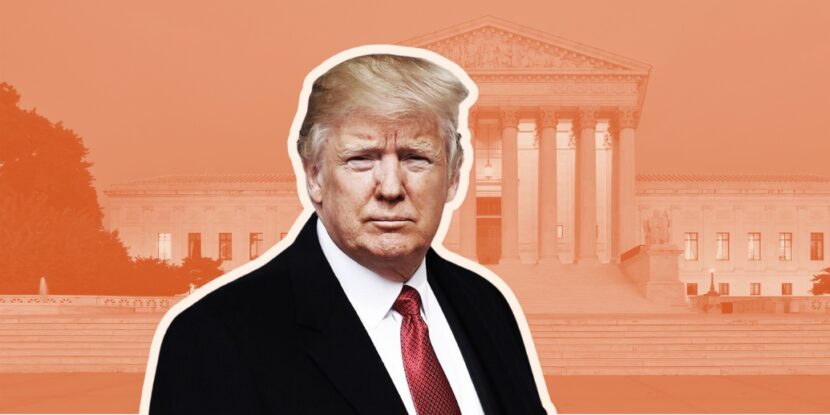
PULSE POINTS:
❓What Happened: The Supreme Court upheld the Trump administration’s decision to terminate thousands of new federal employees by setting aside a lower court’s ruling that ordered their rehiring.
👥 Who’s Involved: The Supreme Court, Trump administration, U.S. District Court Judge William Alsup, nonprofit groups, and acting Solicitor General Sarah Harris.
Your free, daily feed from The National Pulse.
📍 Where & When: The ruling came from Washington, D.C., with a previous lower court decision in San Francisco, California.
💬 Key Quote: “This Court should not allow a single district court to … seize control over reviewing federal personnel decisions,” argued acting Solicitor General Sarah Harris.
⚠️ Impact: The ruling supports the Trump administration’s force reduction policy regarding federal personnel, limiting judicial interference based on complaints from nonprofit organizations.
IN FULL:
The Supreme Court has affirmed the Trump administration’s authority to dismiss thousands of probationary federal employees. This decision, passed by a 7-2 majority, nullifies the order from U.S. District Court Judge William Alsup in San Francisco, which had previously mandated the reinstatement of 16,000 staff across various departments.
Judge Alsup’s ruling rested on arguments from nine nonprofit organizations claiming harm due to government staffing reductions. However, the Supreme Court dismissed these claims as inadequate to provide standing under the existing legal framework—effectively agreeing with President Donald J. Trump’s acting Solicitor General Sarah Harris, who argued in the appeal: “This Court should not allow a single district court to … seize control over reviewing federal personnel decisions.”
“Under established law, those allegations are presently insufficient to support the organizations’ standing,” the Supreme Court’s brief unsigned order reads. Justices Sonia Sotomayor and Ketanji Brown Jackson were the two dissenting voices amongst their peers, supporting the lower court decision that favored rehiring. Justice Elena Kagan, the court’s third liberal member, joined the majority.
Notably, the high court declined to address the standing of federal unions that had also joined the lawsuit. Judge Alsup had already ruled that Congress set out a separate procedure for the labor groups to adjudicate federal employment policies.
The National Pulse reported in March that Judge Alsup ordered the Trump administration to rehire an estimated 16,000 federal workers across a number of agencies, calling the federal government’s contention that the layoffs were performance-based a “gimmick” and a “sham.” Alsup was visibly irate and animated while reading his ruling.
Perhaps realizing that his behavior and legal reasoning made the reversal of his order likely, the far-left judge conceded: “The words that I give you today should not be taken that some wild-and-crazy judge in San Francisco said that an administration cannot engage in a reduction in force. It can be done, if it’s done in accordance with the law.”
show less

 2 months ago
7
2 months ago
7










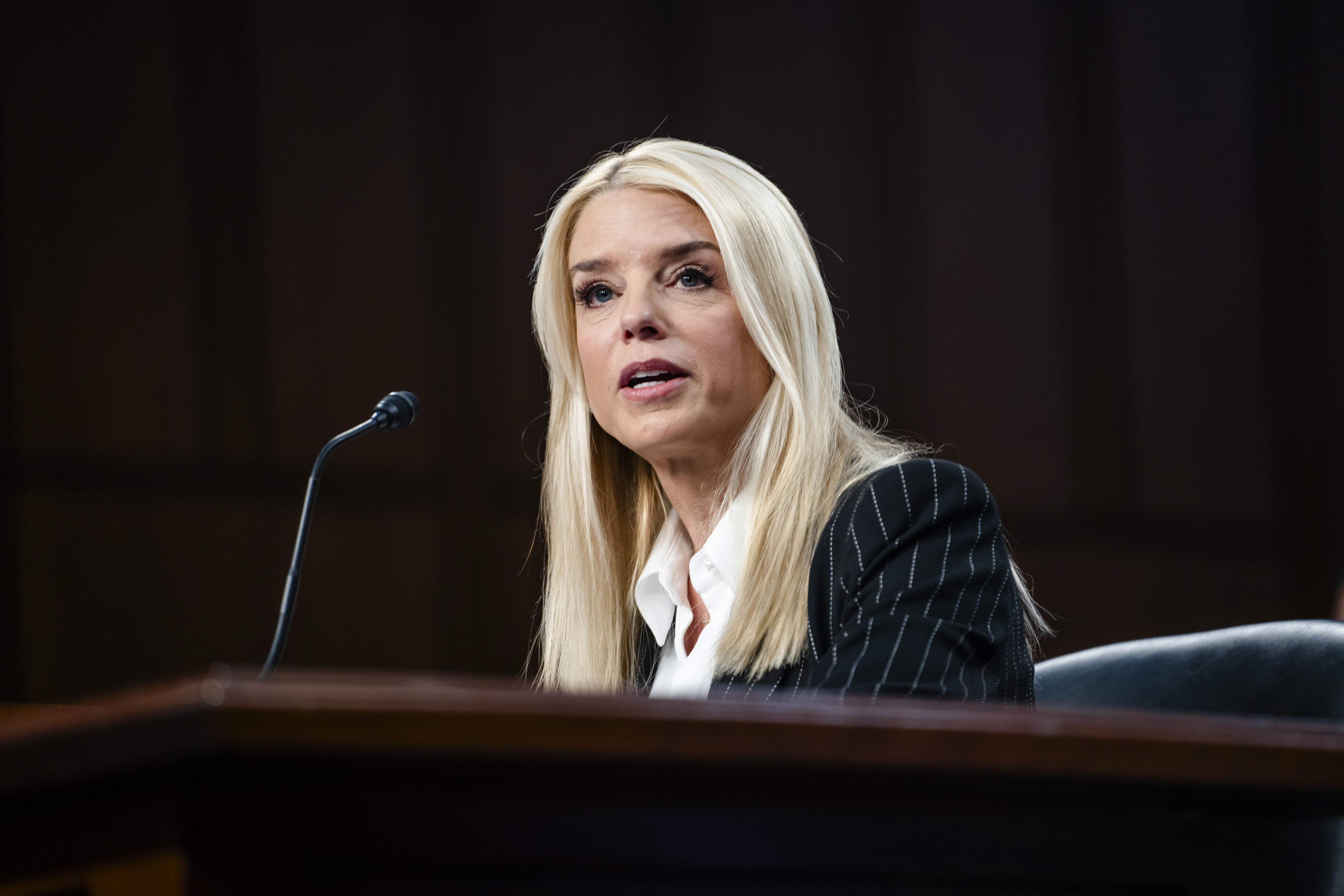
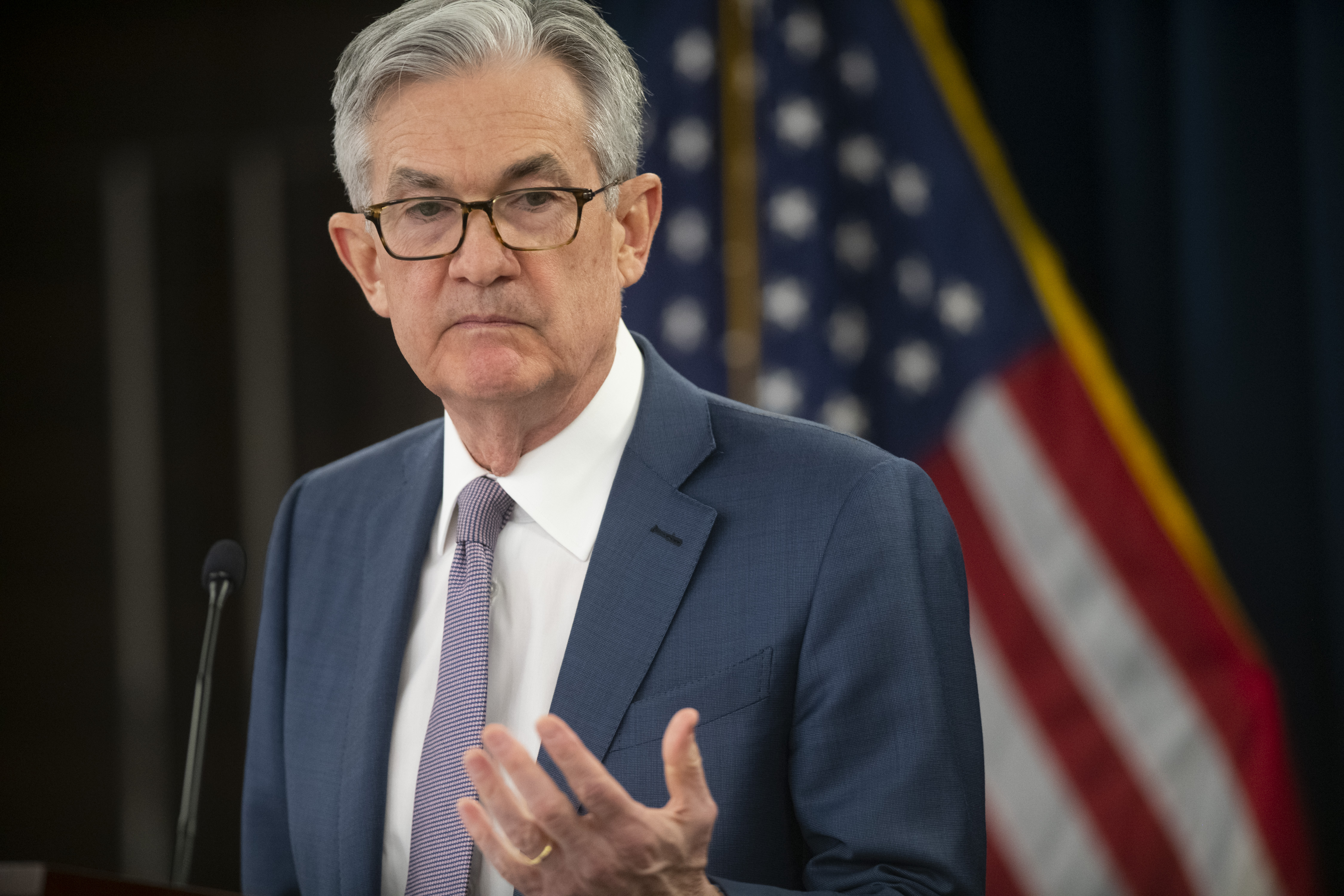
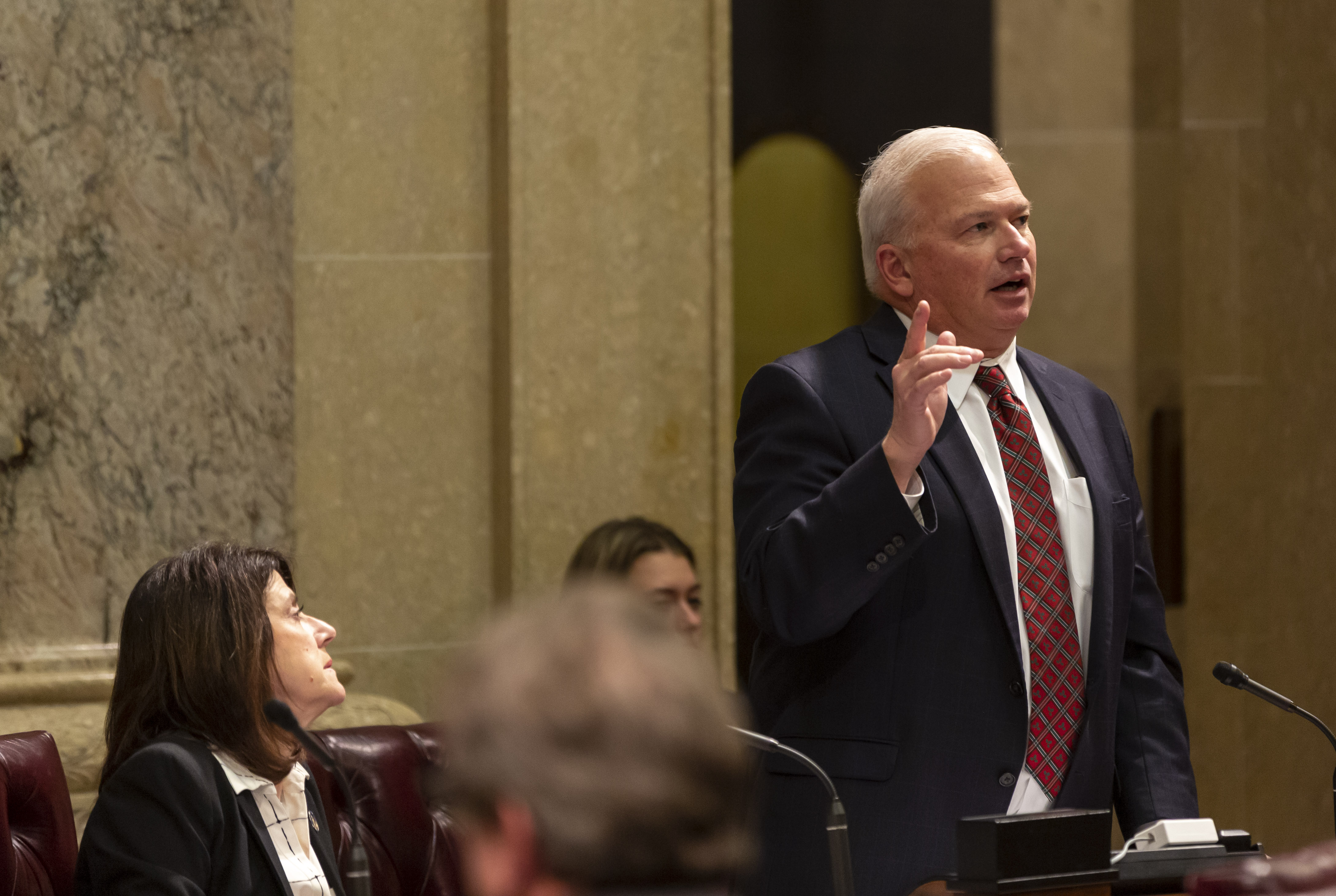





 English (US) ·
English (US) ·